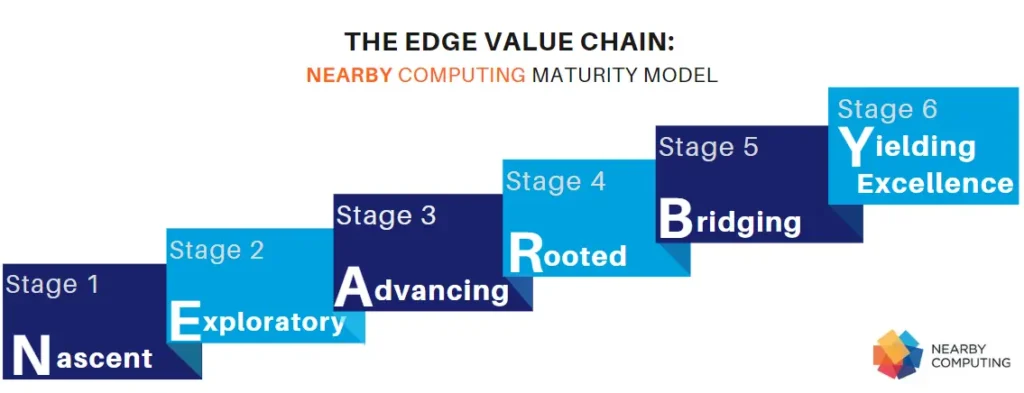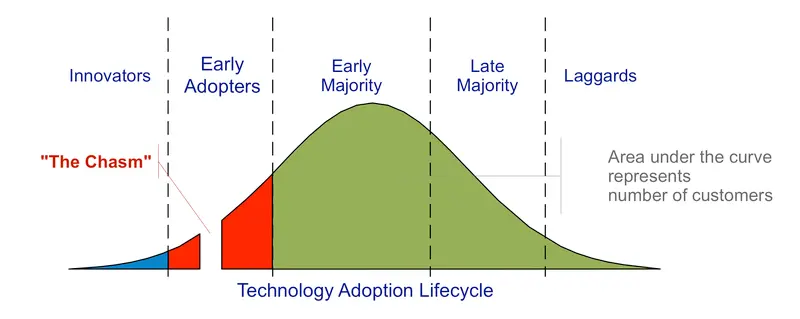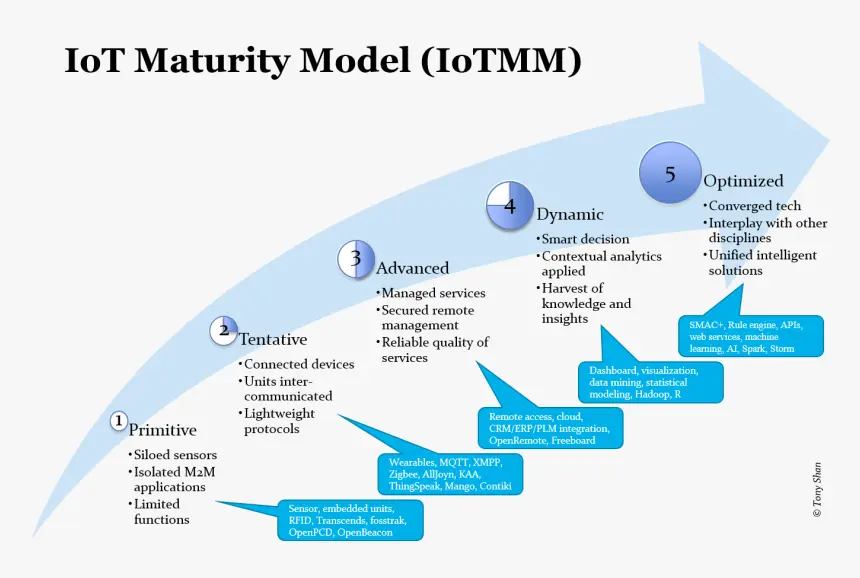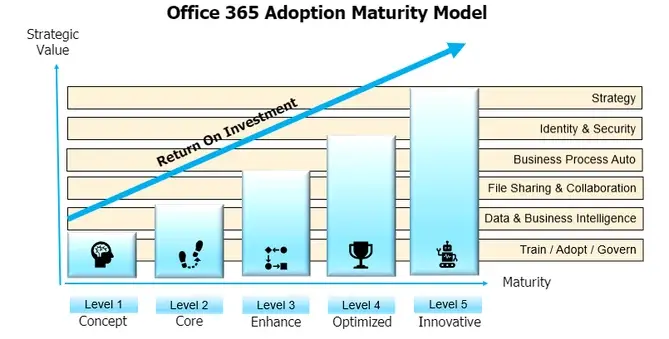The adoption of technology is a fascinating subject, especially in today’s fast-paced world where new tools and innovations are introduced regularly. From smartphones to software, understanding how people and organizations stages of adoption of technology’ scale can help us better predict trends and influence technological integration in various sectors. The stages of adoption of technology, often called the “Technology Adoption Life Cycle,” describe how people with different levels of enthusiasm and understanding embrace innovations at different times.
This concept, introduced in Everett Rogers’ Diffusion of Innovations (1962), is essential for companies, marketers, educators, and decision-makers as it influences how technologies are developed, marketed, and supported. In this article, we’ll explore each stage in detail, examining how individuals and organizations move through the process of adopting new technology, and why understanding these stages is critical for both users and innovators.
stages of adoption of technology’ scale

The Technology Adoption Life Cycle: An Overview
Before diving into each stage, let’s take a quick look at the five key phases of the Technology Adoption Life Cycle:
- Innovators (2.5% of the population)
- Early Adopters (13.5%)
- Early Majority (34%)
- Late Majority (34%)
- Laggards (16%)
Each group has distinct characteristics that define their willingness to embrace and invest in new technology. Companies developing technology often shape their marketing strategies to cater to these different segments, understanding that no single message or approach fits all.
Innovators: The Tech Enthusiasts (2.5%)
Innovators are the pioneers. They are the first to try new technology, often before it’s fully refined. This group is small (about 2.5% of the population), but they play a crucial role in the diffusion process. Innovators are:
- Risk-takers: They are willing to invest time and money in unproven technology.
- Tech-savvy: Innovators are often highly knowledgeable about the technology landscape and understand how to use new products effectively.
- Social influencers: They often share their experiences with others, influencing the early perception of the technology.
Innovators don’t need much convincing to try something new. Their love for cutting-edge gadgets and innovations drives them to adopt technology early, even when it might be expensive or imperfect.
Key Characteristics:
- Love of new ideas and experimentation
- Willingness to take risks with early-stage products
- Opinion leaders within certain social circles
For businesses, engaging innovators can be crucial for early feedback. Many companies seek out innovators through beta testing programs or limited releases, offering exclusive access to the latest products.
Early Adopters: The Visionaries (13.5%)
Early adopters are the next group to embrace technology, making up about 13.5% of the population. They differ from innovators because they are more thoughtful in their approach to adopting new tools, but they still take on some risks. Early adopters are:
- Visionary: They see the potential benefits of a new technology early on and are willing to invest.
- Opinion leaders: Like innovators, early adopters are often influential within their networks, but they tend to have more credibility with the mainstream audience.
- Strategic: They wait until the technology shows some stability but adopt it before it becomes widely popular.
Early adopters are often found in leadership positions within organizations or are individuals looking for a competitive edge. They don’t just adopt technology for its own sake; they see it as a way to gain significant advantages.

Key Characteristics:
- Thoughtful evaluation of technology’s benefits
- Willing to take risks for potential rewards
- Influence within larger social groups
Businesses targeting early adopters should focus on demonstrating the practical benefits of their technology. Case studies, testimonials, and demonstrations showing real-world applications can be highly effective in converting this group.
Early Majority: The Pragmatists (34%)
The early majority represents a larger segment of the population, about 34%. This group is more cautious than the previous two but still open to new technology, especially when they see it as a proven solution. Early majority users are:
- Pragmatic: They adopt technology once it has been vetted by early adopters and is considered stable.
- Value-conscious: They want to make sure they are getting a good product for their money, and they often need to see widespread success before committing.
- Less tech-savvy: This group may not be as deeply involved in the technology world, so they look for reassurance that the innovation is user-friendly and reliable.
The early majority plays a crucial role in the adoption process. Their collective investment in new technology helps drive widespread usage, making the innovation a mainstream product.
Key Characteristics:
- Risk-averse, preferring proven technologies
- Seek value and stability before adopting
- Influence purchasing decisions in larger groups
Companies looking to capture the early majority need to present their technology as reliable, cost-effective, and widely adopted. Marketing efforts might focus on ease of use, long-term benefits, and endorsements from trusted sources.
Late Majority: The Skeptics (34%)
Like the early majority, the late majority makes up about 34% of the population. However, this group is more conservative and skeptical about adopting new technology. They tend to wait until the technology has become a standard in society, and they have little choice but to adopt it. The late majority is:
- Skeptical: They are often hesitant to adopt new technology, waiting until it is unavoidable or absolutely necessary.
- Cost-conscious: Price reductions or widespread discounts often encourage the late majority to finally adopt.
- Follower mentality: This group adopts technology when most of their peers have already embraced it.
The late majority tends to resist change until it becomes unavoidable. Whether due to social pressure, necessity for work, or lower costs, they eventually adopt the technology, but with far less enthusiasm than earlier groups.
Key Characteristics:
- Cautious and resistant to change
- Motivated by necessity or peer pressure
- Price-sensitive and value-driven
Marketing to the late majority often requires a focus on affordability, simplicity, and the fact that “everyone else is using it.” Highlighting the overwhelming success and ubiquity of the product can be key in convincing this group to buy in.
Laggards: The Traditionalists (16%)
Laggards are the last group to adopt new technology, making up about 16% of the population. These individuals are often resistant to change and prefer to stick with what they know, even if it becomes outdated. Laggards are:
- Resistant to change: They are skeptical of new technology and often only adopt it when their existing systems are no longer viable.
- Traditional: Laggards prefer the old way of doing things, sometimes due to a lack of trust in new products or a fear of change.
- Isolated: Often, laggards are less influenced by social trends or peer pressure and more focused on personal comfort and routines.
Laggards usually adopt technology out of necessity rather than choice. They might be forced to upgrade due to compatibility issues, work requirements, or when their old technology no longer functions.

Key Characteristics:
- Highly resistant to change
- Value tradition and familiar processes
- Typically adopt out of necessity
For businesses, targeting laggards is not typically a high priority. However, simplifying the transition process and providing clear, straightforward guidance can help ease their adoption when they do eventually switch over.
Factors Influencing Technology Adoption
Several factors influence how and when people adopt technology. Understanding these factors can help innovators and businesses create strategies that encourage faster and more widespread adoption.
Also read Trendy Hair Accessories: What’s Hot Right Now?
Perceived Value
One of the primary drivers of adoption is the perceived value of the technology. If users believe that the new technology will make their lives easier, save them time, or provide substantial benefits, they are more likely to adopt it.
Cost
Cost is a significant barrier to adoption, especially for the late majority and laggards. Expensive technologies tend to have slower adoption rates unless the value is overwhelmingly clear. Pricing strategies, including introductory discounts or payment plans, can help lower the barrier to entry.
Ease of Use
The simpler the technology is to use, the faster it will be adopted. Complex, difficult-to-understand products tend to be ignored, especially by the less tech-savvy majority. Companies that focus on user-friendly designs and interfaces can increase the rate of adoption.
Social Influence
People often adopt technology because others around them are using it. Innovators and early adopters can create momentum that encourages the early and late majority to follow suit. Social media, word-of-mouth recommendations, and peer pressure all play a role in this.
Compatibility
How well new technology integrates with existing systems can also affect its adoption rate. If the new product requires users to overhaul their entire setup, it may deter adoption, especially among the more conservative groups.
Real-World Examples of Technology Adoption
Smartphones
The adoption of smartphones is a classic example of the Technology Adoption Life Cycle. Innovators and early adopters started using smartphones when they were expensive and relatively niche. As the technology improved, prices dropped, and manufacturers created more accessible models, the early and late majority began to embrace smartphones. Today, even laggards have adopted smartphones, as they’ve become an essential part of daily life.
Streaming Services
The shift from cable television to streaming services followed a similar pattern. Innovators and early adopters quickly embraced platforms like Netflix and Hulu. As the services expanded their offerings and made streaming more accessible, the early majority followed. Today, the late majority and even laggards have made the switch as traditional cable has declined.
Conclusion
Understanding the stages of technology adoption is crucial for businesses, marketers, and innovators. It helps them target the right audience with the right message at the right time. It also offers insights into how people perceive, interact with, and ultimately embrace new technologies. By catering to the specific needs and concerns of each group in the Technology Adoption Life Cycle, companies can ensure their products have the best chance of widespread adoption.
If you’re a business or entrepreneur, knowing which phase your audience is in can help you craft your messaging, adjust your pricing, and improve your product development strategies. For users, understanding where you fall in the adoption spectrum can help you make more informed decisions about when and why to adopt new technology.




